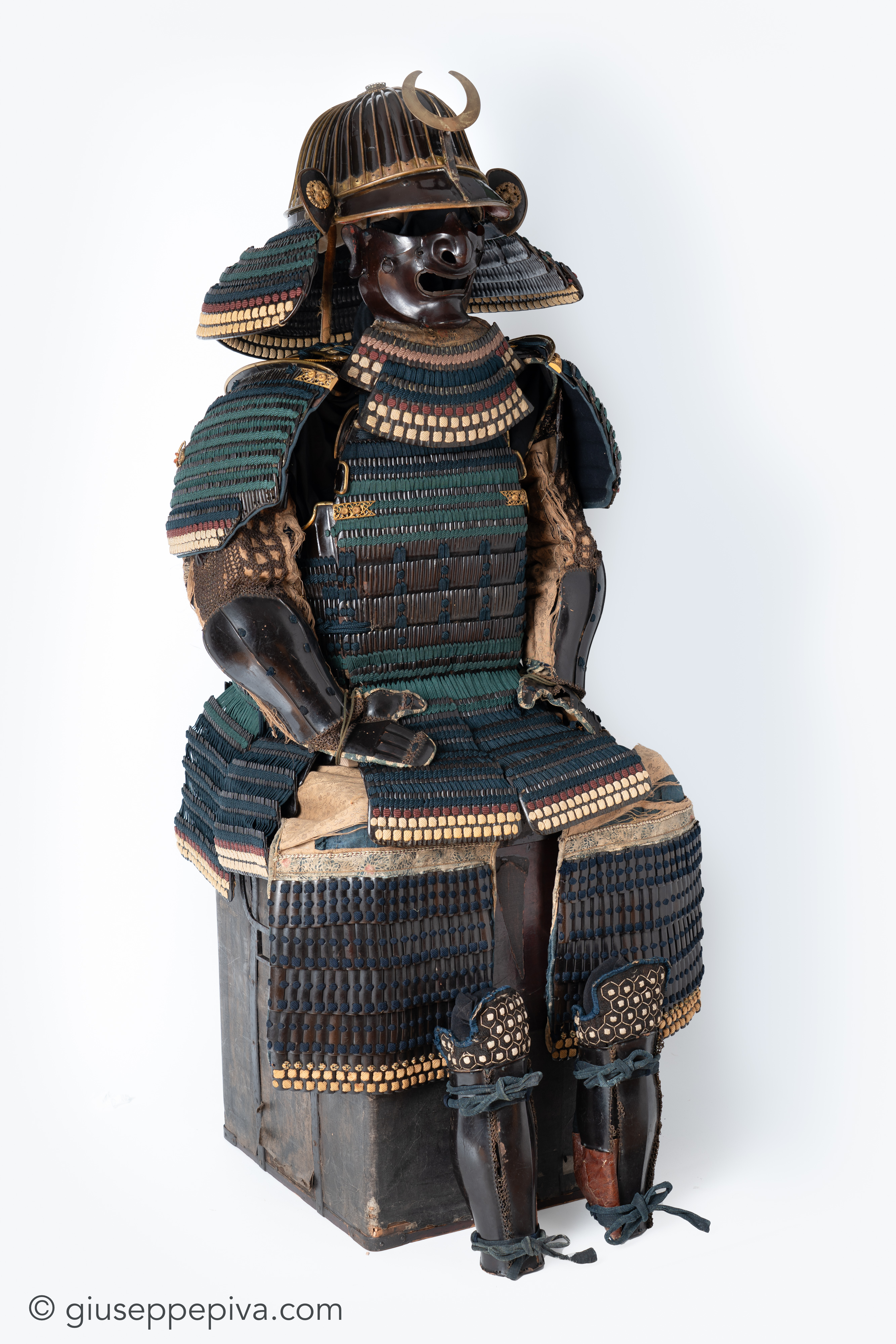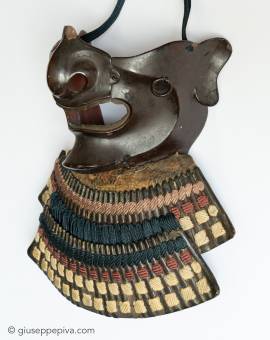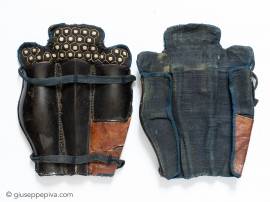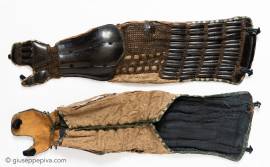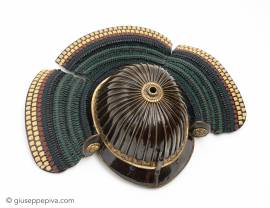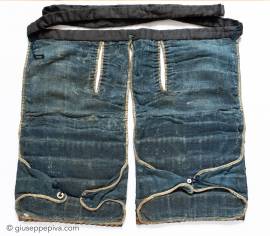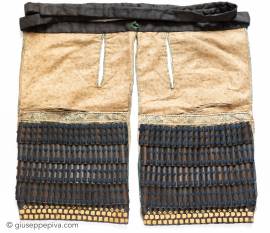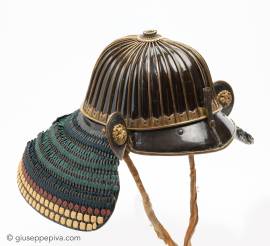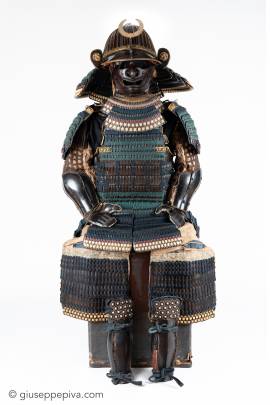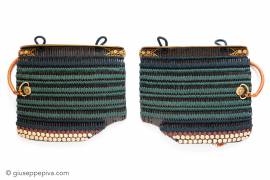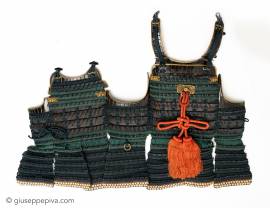Hon-kozane maru-do gusoku so-fukurin
Complete samurai armor
Early Edo Period, 17th century
Kabuto [helmet]: 32-plate so-fukurin kabuto. The shikoro (neck guard) is all in hon-kozane (true scale), divided in three sections.
Menpō [mask]: A rare lacquered iron ressei-men (mask with fierce expression) with a large nose and no mustache.
Dō [cuirass]: Maru-dō (made in a single piece) with hon-kozane (true scale) construction. The lacing is in two different style, with a difference in the central part (munakoshitori); gilt-brass rims and fine pierced kanamono (application).
Sode [shoulder guards]: Mid-size type (chu-sode), with a cut-out corner and fine kanamono.
Kote [sleeves]: Lacquered, of tsutsu type, covering completely the forearms.
Haidate [thigh guard]: Of kawara type, made of tied curved roof-tile shaped plates.
Suneate [shin guards]: Lacquered, of tsutsu type, covering completely the legs.
-
Origami [paper]: The armor is certified by the Association for the Research and Preservation of Japanese Helmets and Armor as Kōshu-tokubetsu-kichō-shiryō.
This complete and authentic samurai armor features the typical characteristics of the early production of tosei gusoku ("modern armor") in Western Japan. In fact, the colors are garish and the finishing is elegant, with unusual stylistic solutions.
The helmet is typical of the Haruta school and echoes the akoda-nari type patterns popular in the region since the Muromachi period, and the mask offers a fierce expression while remaining with elegant features and original traits. The construction displays elements of practicality that specimens produced later in the Edo period would go on to lose and that are typical of samurai armor of the sengoku jidai (Warring States Period): the curved edge at the top of the armor and the additional movable protections on the sides were in fact used to prevent the tip of a weapon from slipping toward the throat or armpits. In addition, the shikoro (neck guard) divided into three parts and the sode (shoulder shields) with the front corner cut off offered greater freedom of movement in battle.
The number of tassels protecting the lap (kusazuri) is also quite peculiar, as is the use of a sugake odoshi binding with hon-kozane plates in the central part of the armor, as common on some haramaki of the Muromachi period.
The gilt brass applications (kanamono) are of the highest quality, especially on the back. Such refinement suggests a date slightly later than the Momoyama period.
Price: 45,000 €
Inventory Nr: 1735
Info works
Copyright © 2016 - giuseppe piva - VAT: 05104180962


